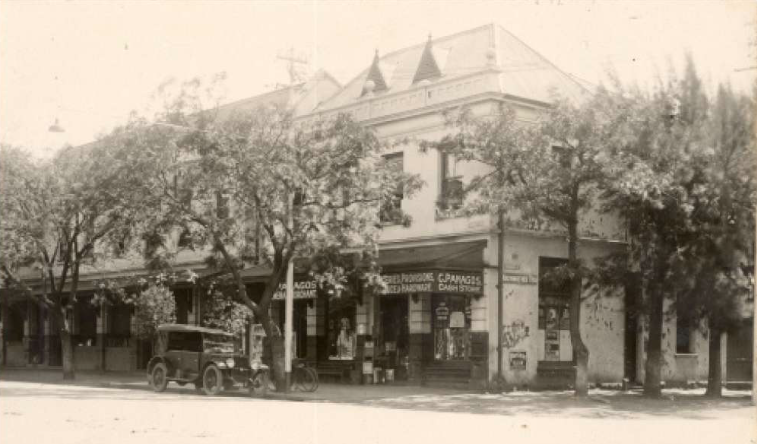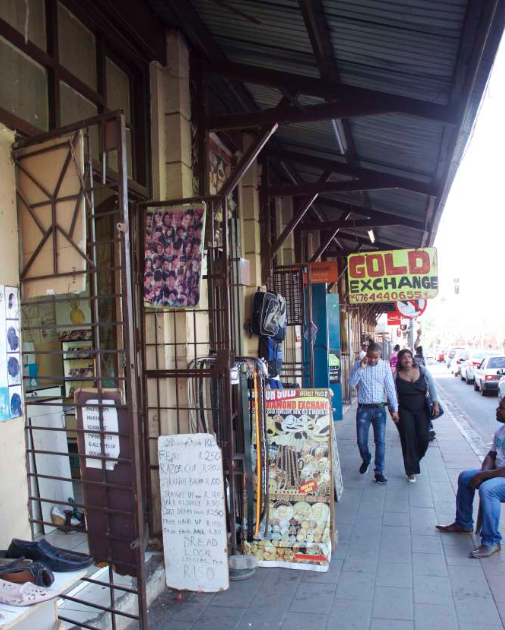
The Panagos Building is one of the oldest buildings in Pretoria. It appears as though the current owners intend to make alterations and additions without the necessary permit from the Provincial Heritage Resources Authority Gauteng (PHRAG). This is despite engaging a heritage practitioner to prepare a heritage statement. Click here to view location on google maps. Please use this thread to add background and updates.
Below are a few excerpts from the heritage statement compiled by Michael Hart.
Historical Significance
The 1875 surveyor general diagram of portion 4 and Re lot 102 may be an indication of earlier development of the site. The 1880 construction date (Meiring 1980) and the 1897 construction date (D Panagos) and the subtle differences in construction indicate that the current buildings were constructed over a period of time.
Of historic significance is the fact that the alterations in both 1940 and 1946 were designed by the architect V.S Rees ‘Poole.
Architectural Importance
The historic typology is of great importance. The corner building assumed to be the older building was built with a shop on the ground floor and a residential flat above. This typology suited the lifestyle of a general dealer who owned the building. Owner Hendrik Zagt (Le Roux pg 65)
It was recorded by Le Roux in Plekke en geboue van Pretoria vol 2 pg 65 that the southern building was originally solely residential units. This statement may be challenged based on the form, siting and architectural elements of the building. The form of the building offers a high floor to ceiling dimension on the ground floor. This relates to a commercial use rather than residential. The linear form of the building along Paul Kruger Street maximises the street frontage required for retail use and would not have been required for residential use. This relates to the siting of the building up to the boundary and in some case perhaps over the street boundary. The access to the back of the site gained from the lesser important road of Struben Street. The large timber and glass doors and display windows onto the street are synonymous with retail rather than a residential use. The ground floor pavement roof overhang is a public gesture to shelter people on the street and invite them to gravitate towards the building. This would not have been the case if the ground floor was designed as a solely residential building.
The fact that there was originally an internal staircase that linked the ground floor to the first floor does not indicate that the ground floor was used for residential. It was a common trend for traders to live above their shops. Typical of European and British urban mixed-use buildings where the shop front was established on the street front and the owner and their families lived above or behind the store.
The skilful architectural resolution of the street facing facades of the two buildings indicates that attention to detail was high and that the importance of the street facing façade especially along the ground floor was high. This would have been important, as it’s the interface between the shop front and the general public shoppers.
The subsequent removal of the internal stairs in 1946 and the extension of the shop into the back space with the retention of the residential use above reflects on the relevancy of the uses as designed for in the original building typology.
The two buildings were also jointed by means of a staircase and passage. The date of this alteration /addition is unknown.
Cultural Significance
The importance of the location of the site itself leads to symbolic significance. The site is located at the intersection of Paul Kruger Street (previously Market Street) which is on axis with Church Square and Freedom Park and Struben street that aligns with the Union Buildings. Furthermore the precinct locale is rich in historic buildings.
Paul Kruger Street is highlighted within the most current Urban Design Framework for Pretoria as a new “Government Boulevard”
Original street facing canopy (Michael Hart)
Comments will load below. If for any reason none appear click here for some troubleshooting tips. If you would like to post a comment and need assistance click here. Irrelevant and inappropriate comments will be removed by the moderator. Only add background and updates to the tracking threads.

